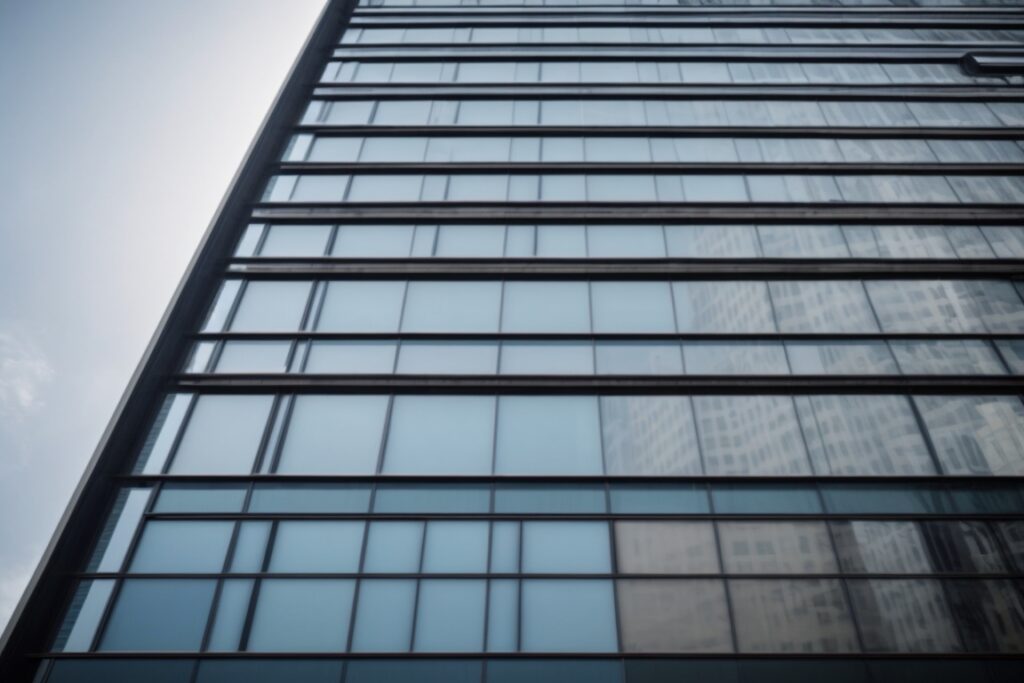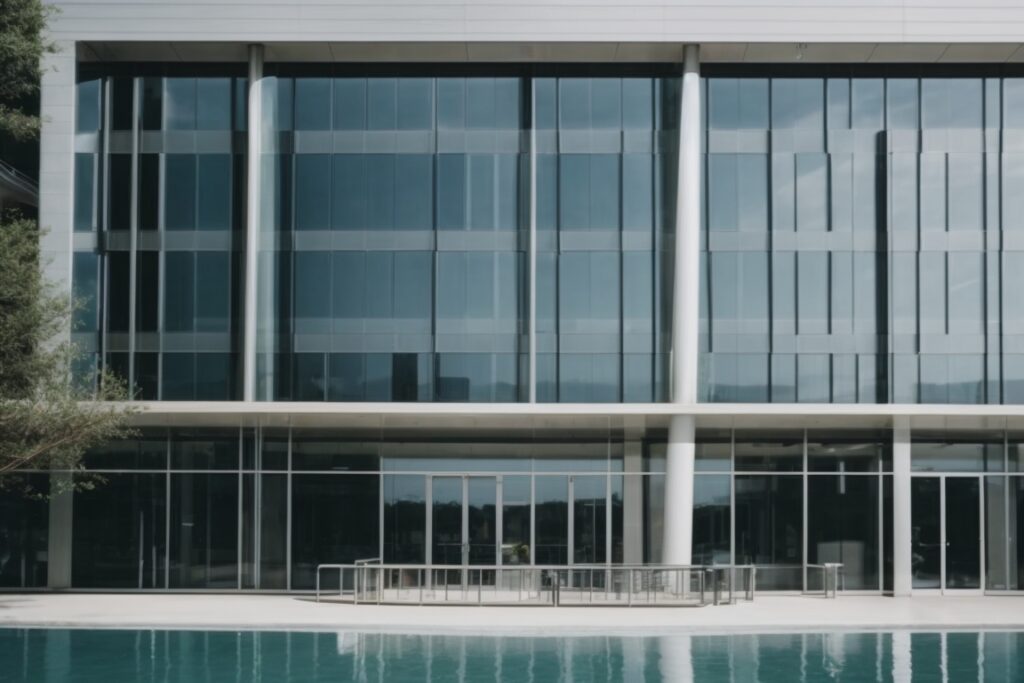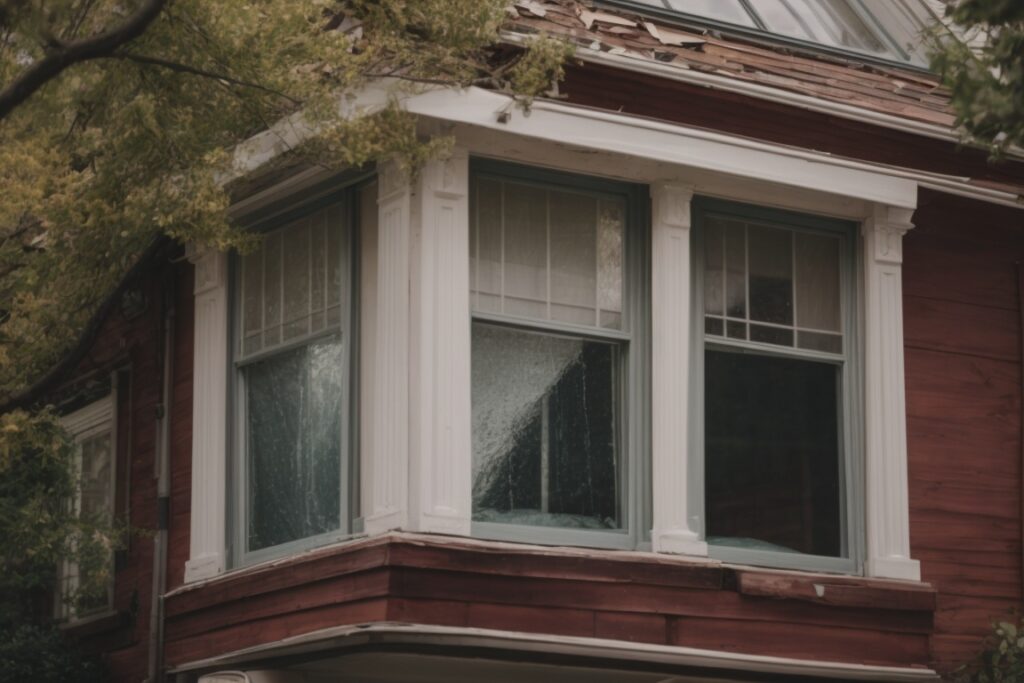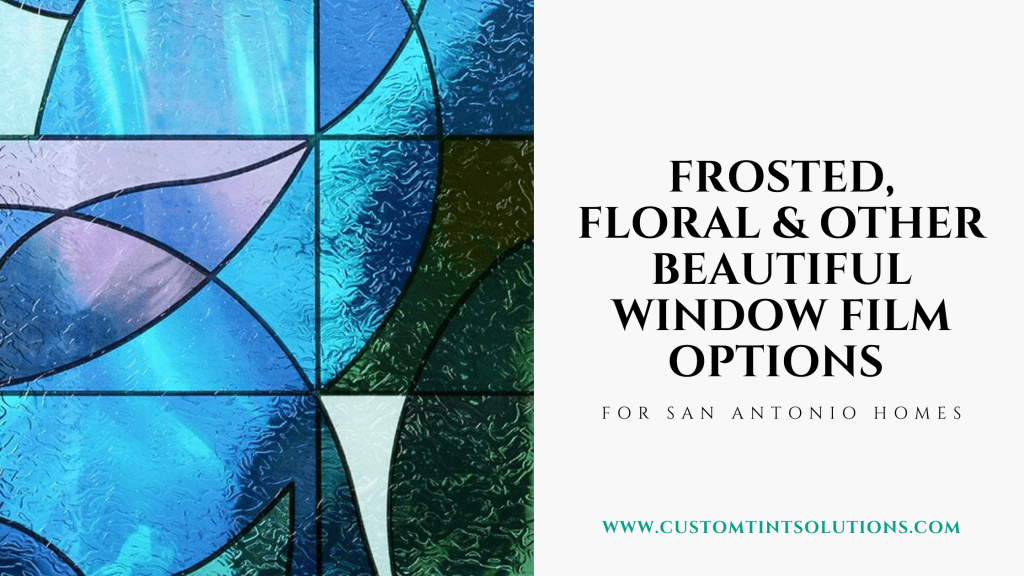

Enhancing Chicago’s Architectural Beauty with Energy-Efficient Window Film
In Chicago, a city renowned for its bold skyline and architectural innovation, the increasing need for energy efficiency and aesthetic enhancement in buildings is becoming a pressing issue. As stakeholders seek ways to reduce energy costs and increase the visual appeal, window film in Chicago emerges as a revolutionary solution that offers significant advantages. Despite its benefits, many in the city are still unaware of the potential that window films hold to transform both new and existing structures.
The application of window film is not only about improving the energy efficiency of a building but also about upgrading its overall aesthetic. Many of Chicago’s iconic structures could benefit from this simple addition, which helps in reducing glare, blocking harmful UV rays, and even preventing fading of interior furnishings. Moreover, with the rising concern over carbon emissions and energy consumption, enhancing energy efficiency is a critical goal for the city’s sustainability plans.
However, the awareness surrounding the multifaceted benefits of window films is still limited among property owners and developers. This lack of knowledge results in missed opportunities to optimize the functionality and look of many buildings across Chicago. As the city moves forward with its architectural ambitions, integrating advanced materials like window films can play a pivotal role in aligning aesthetic desires with environmental responsibilities. The conversation about upgrading building envelopes with window films is crucial for the future of Chicago’s urban landscape.
Introducing the Need for Energy-Efficient and Aesthetic Window Films in Chicago
Chicago’s architectural landscape is renowned for its dynamic skyline which features a blend of historic and modernist buildings. A significant issue arises when considering the energy efficiency and aesthetic appeal of these structures, particularly through the windows that offer both a view and exposure to varying weather conditions. The primary concern here is the balance between maintaining the visual appeal of these iconic buildings while enhancing their energy efficiency.
Window films have emerged as a viable solution, yet their adoption across Chicago’s vast architectural expanse has been slow. This is primarily due to a lack of awareness and understanding of the benefits that high-quality window films can offer. They are crucial for reducing glare, blocking harmful UV rays, and decreasing energy costs. However, many of Chicago’s building owners and managers aren’t fully utilizing this technology. Addressing this oversight is pivotal in pushing forward both the sustainability and the enhanced visual harmony of Chicago’s architectural marvels.
Startling Window Film Facts in Chicago
In the bustling cityscape of Chicago, the move towards energy-efficient and aesthetic building solutions is not just a trend but a necessity. Surprisingly, buildings account for 71% of Chicago’s total electricity usage, with a significant portion of this energy lost through windows. Window films can reduce this energy loss by up to 30%, significantly slashing utility bills. Furthermore, unprotected windows in urban environments often contribute to rapid fading of interior furnishings due to UV exposure, a problem that high-quality window films can attenuate by blocking up to 99% of these harmful rays.
The Problem With Inadequate Window Films in Chicago’s Urban Environment
In Chicago’s bustling urban landscape, the right choice of window film is not just a matter of aesthetics but a crucial element for comfort and energy efficiency. However, many buildings still utilize either inefficient or purely decorative window films that fail to meet the city’s unique environmental demands. This oversight can lead to several problems for both residential and commercial property owners in Chicago.
Firstly, with Chicago’s varied climate, where summers can be extremely warm and winters bitterly cold, traditional window films often do not provide adequate insulation. This leads to significant energy losses, causing higher utility bills and decreased comfort levels within the buildings. Such films struggle to block out the heat during summer and retain warmth during the winter, essentially failing to function efficiently in Chicago’s temperature extremes.
Additionally, the use of subpar window films can result in increased UV exposure, which not only fades furniture and fixtures but can also pose health risks to occupants. Exposure to excessive ultraviolet rays can be harmful, and the inadequate UV protection provided by inferior films only exacerbates this risk. Despite Chicago’s skyline often being clouded by the urban jungle, the need for effective UV protection is paramount, but often overlooked in ordinary window film solutions.
The outcome of using these lesser films is a cycle of replacement and repair, as they are not built to withstand the windy city’s harsh environmental conditions. This results in unnecessary expenditure and hassle, making what could be a one-time wise investment into a recurring problem.
For many Chicagoans, the persistent issue with inadequate window films represents not just a financial burden but a daily discomfort in their living or working environments, detracting from the quality of life and operational productivity. This problem accentuates the need for a solution tailored to both the aesthetic and practical demands of a modern Chicago property.
Understanding the Problem: Implications of Standard Windows in Chicago’s Urban Landscape
While the grandeur of Chicago’s skyline cannot be overstated, the standard windows installed in many of its buildings pose significant challenges not immediately apparent to the building owners or residents. These traditional windows often contribute to increased energy expenditures, especially when facing Chicago’s extreme weather conditions, from sweltering summers to frigid winters.
Moreover, the absence of window film can also accelerate the aging and wear of interior materials due to excessive UV exposure, casting a shadow on the aesthetic appeal of both historical and modern interiors. As urban expansion continues, the intensive use of glass in architecture, without protective window films, exacerbates these issues, raising energy costs and compromising on in-building comfort.
This scenario steadily shapes an increased demand for a solution that not only champions energy efficiency but also enhances the architectural aesthetics without compromising on the environmental or financial aspects that concern property managers and residents alike.
Boosting Energy Efficiency in Chicago’s High-Rises with Window Film
Chicago’s iconic Willis Tower recently underwent a significant upgrade with the installation of advanced window film. Facing issues of high energy consumption and heat loss, management opted for a specialized film designed to improve insulation and reduce glare. Post-installation reports highlight a marked reduction in HVAC costs by 15% and an increase in comfort for occupants, underscoring the functional and financial benefits of utilizing window film in urban architectures.
Ignoring Window Film: A Costly Oversight for Chicago Properties
Choosing to overlook the installation of window film in Chicago buildings might seem like a minor omission, but it carries heavy consequences, especially in an urban environment that experiences varied seasonal changes. Without these energy-efficient and aesthetic films, property owners face several detrimental impacts.
Financial repercussions are amongst the most noticeable consequences. Chicago’s dramatic temperature fluctuations mean heating and cooling costs can be substantial. Window films significantly reduce these costs by improving thermal efficiency, but ignoring their installation leads to higher energy bills year-round. Over time, these added costs can accumulate, representing a significant financial strain.
Moreover, the lack of window film exposes the interior of buildings to excessive sunlight, which can lead to faded furniture, artwork, and upholstery. This not only diminishes the aesthetic value of the property’s interior space but could also mean a higher cost in maintenance and replacement of these damaged items.
Failing to use window films could also impact the overall property value. Buildings that lack modern energy-efficient installations like window films might be less attractive to potential buyers or renters, reflecting negatively on the property’s long-term investment potential.
Economic Impact of Window Films in Chicago Homes
Installing window film in Chicago contributes positively to a homeowner’s economic security. By enhancing energy efficiency, these films significantly reduce heating and cooling costs throughout the year. Consequently, homeowners can save a considerable amount of money on their utility bills — a critical factor given Chicago’s extreme weather conditions. Over time, the investment in high-quality window film pays off by lowering energy expenses and increasing the home’s overall energy efficiency.
Window Film as a Solution for Chicago’s Architectural Challenges
In the dynamic urban environment of Chicago, where architectural aesthetics heavily influence building design, window film emerges as an essential solution addressing both aesthetic and functional challenges faced by property owners and designers. This section explores how window film specifically caters to the unique demands of Chicago’s skyline, encompassing decorative and energy-efficient features.
Chicago’s architectural diversity demands solutions that are flexible and adaptive. Decorative window films meet this need by providing a range of styles and textures that enhance the visual appeal of buildings without necessitating major renovations. These films can mimic etched, frosted, or textured glass, thus contributing to the aesthetic value of a property while offering a cost-effective alternative to actual glass replacements.
Apart from aesthetics, Chicago’s fluctuating temperatures pose a significant challenge, making energy efficiency a top priority. Window films effectively address this concern by adding an insulation layer to glass, reducing heat loss during cold months and blocking excessive solar heat in the summer. This dual action capability ensures that building interiors maintain more consistent temperatures, leading to reduced reliance on heating and cooling systems, thus lowering energy costs significantly.
The positioning of window film as a solution in Chicago is not merely about its functional benefits. It also encompasses sustainability by prolonging the lifespan of window fixtures and reducing carbon footprints through better energy management. Residential and commercial property owners thus find in window films a perfect blend of functionality, aesthetics, and environmental responsibility, making it an ideal choice for modernizing and protecting Chicago’s esteemed buildings.
Transforming Chicago’s Structures with Window Film
Window film represents a transformative solution for buildings throughout Chicago, merging architectural aesthetics with outstanding functionality. This innovation is particularly useful for addressing the common urban challenges of privacy, energy consumption, and glare inside skyscrapers and residential properties. By applying high-quality window film to glass surfaces, buildings can significantly enhance their energy efficiency, reducing the reliance on artificial heating and cooling systems and, in turn, decreasing energy expenses.
Moreover, modern window films come in a variety of decorative options, allowing building owners to not only improve the practical aspects of their properties but also enhance their visual appeal. Whether it’s a frosted look that increases privacy or a tint that reduces glare, these films provide both aesthetic flexibility and functional benefits. This dual advantage is key in a bustling metropolis like Chicago, where the balance between beauty and utility is paramount.
Ultimately, the adoption of window film in Chicago aids in the city’s ongoing efforts to modernize its structures while promoting a more sustainable and comfortable urban environment.
Benefits and Features: Window Film Solutions in Chicago
Window film in Chicago enhances both the aesthetic appeal and functionality of buildings. One primary advantage is energy efficiency, as these films significantly reduce the heat gain from sunlight, thereby decreasing air conditioning costs. They also protect against UV rays, which helps in preventing the fading of furniture and carpets. Moreover, window films provide added privacy and security by obscuring the interior view and reinforcing glass against break-ins. Aesthetically, they offer a variety of designs and tints, which can be customized to enhance the architectural style of any space.
Success Stories: Enhancing Chicago’s Workplaces with Window Film
One remarkable example of how window film has revitalized a Chicago workspace comes from a downtown high-rise office. The building manager, Julia Stein, reports that after installing energy-efficient window films, they observed a noticeable decrease in their heating and cooling costs. This change not only improved the building’s sustainability but also enhanced employee comfort, leading to increased productivity throughout the year.
Another testimonial comes from a small art gallery in the Chicago Loop, where the owner, Mark Thompson, praised the decorative window films for transforming the space. “The films provided us with just the right amount of natural light without the harmful UV rays that could damage the artworks,” Mark noted. This aesthetic enhancement has not only protected valuable art but also created a more inviting atmosphere for visitors, significantly boosting visitation rates and overall satisfaction.
Case Study: Chicago’s Willis Tower Window Film Transformation
In a move to enhance energy efficiency and aesthetic appeal, Willis Tower implemented advanced window films throughout its towering structure. This strategic upgrade not only reduced energy consumption by 20% but also significantly lowered HVAC costs, crucial for Chicago’s fluctuating climates. The success story of Willis Tower showcases the tangible benefits of choosing the right window films, emphasizing sustainability and cost-effectiveness. Inspired by the transformation? Contact us today to revolutionize your space with our top-notch window film solutions in Chicago!







About The Author: Mike Kinsey, Author at Custom Tint Solutions
Mike Kinsey uses his knowledge of window film products and industry innovations to help customers find simple, versatile solutions for meeting their architectural goals. As the Operations Manager for Custom Tint Solutions, he is the head of sales, customer relations, and product education and also personally oversees all window film installs from start to finish. His fifteen years of experience combined with his background in construction and project management sets him apart as an expert in his field. Mike's qualifications are extensive and are backed by certifications from 3M, EnerLogic, and AIA for continuing education.
More posts by Mike Kinsey, Author at Custom Tint Solutions